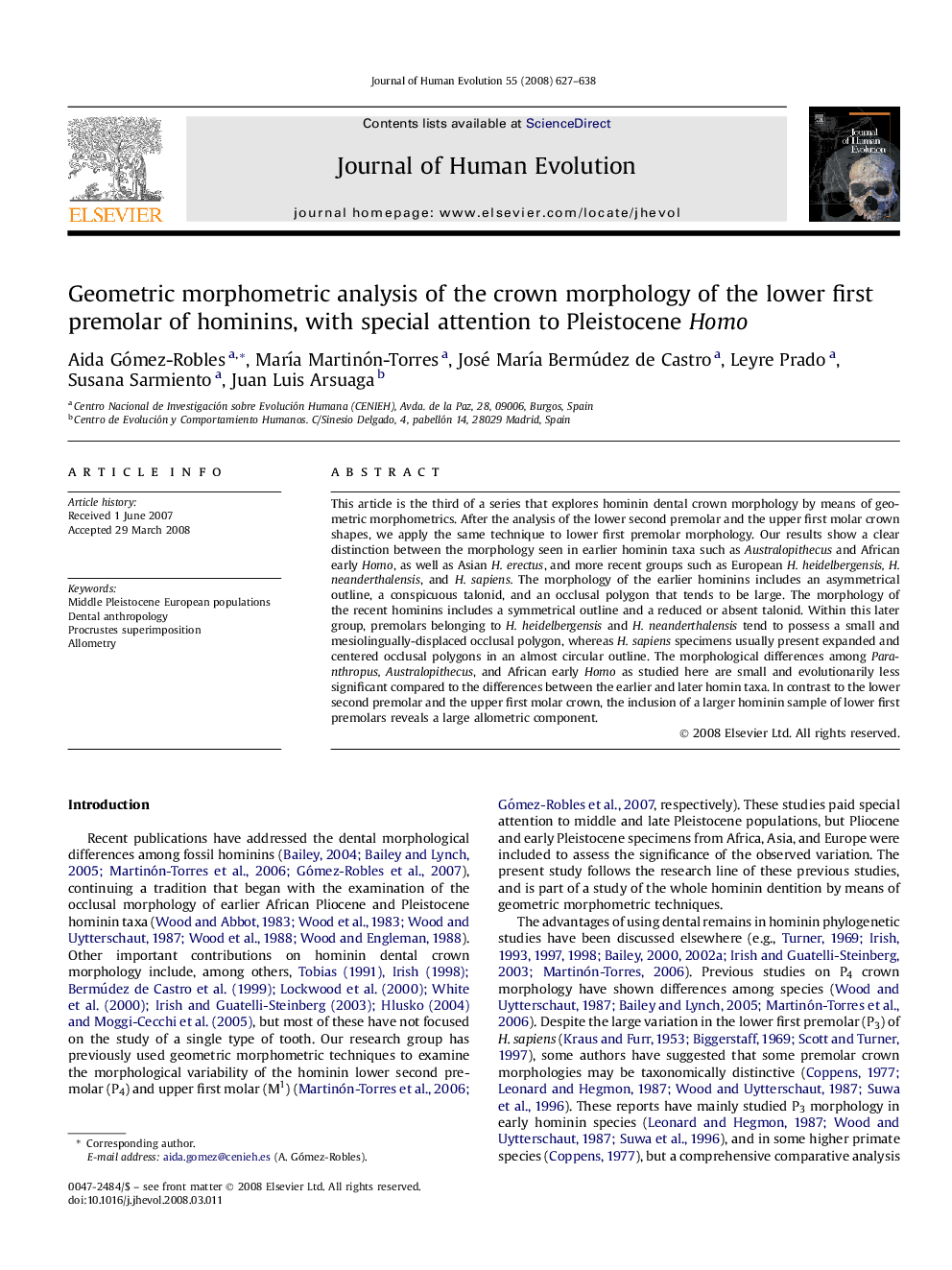| Article ID | Journal | Published Year | Pages | File Type |
|---|---|---|---|---|
| 4557239 | Journal of Human Evolution | 2008 | 12 Pages |
This article is the third of a series that explores hominin dental crown morphology by means of geometric morphometrics. After the analysis of the lower second premolar and the upper first molar crown shapes, we apply the same technique to lower first premolar morphology. Our results show a clear distinction between the morphology seen in earlier hominin taxa such as Australopithecus and African early Homo, as well as Asian H. erectus, and more recent groups such as European H. heidelbergensis, H. neanderthalensis, and H. sapiens. The morphology of the earlier hominins includes an asymmetrical outline, a conspicuous talonid, and an occlusal polygon that tends to be large. The morphology of the recent hominins includes a symmetrical outline and a reduced or absent talonid. Within this later group, premolars belonging to H. heidelbergensis and H. neanderthalensis tend to possess a small and mesiolingually-displaced occlusal polygon, whereas H. sapiens specimens usually present expanded and centered occlusal polygons in an almost circular outline. The morphological differences among Paranthropus, Australopithecus, and African early Homo as studied here are small and evolutionarily less significant compared to the differences between the earlier and later homin taxa. In contrast to the lower second premolar and the upper first molar crown, the inclusion of a larger hominin sample of lower first premolars reveals a large allometric component.
